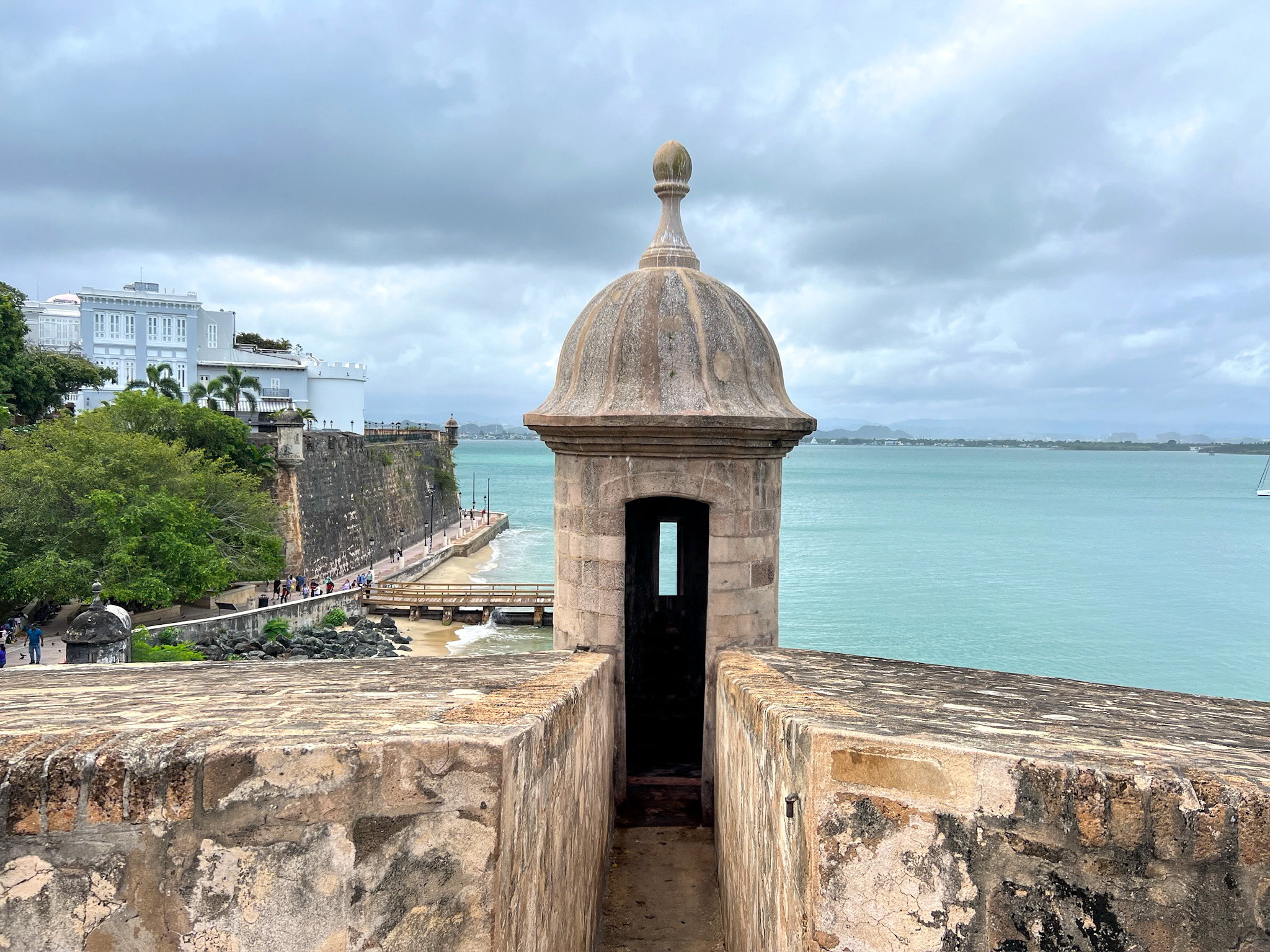No passport required for these bucket-list adventures
Here’s something that might surprise you: you don’t need to fly halfway around the world to experience UNESCO World Heritage Sites. Right here in the U.S., we’ve got 26 officially recognized sites that represent some of the most extraordinary places on Earth.
These sites tell the story of our planet’s natural wonders and human achievements. They’re part of UNESCO’s global collection of 1,248 World Heritage Sites across 170 countries, with many of these places deemed to have “outstanding universal value to humanity.”
Quick Facts:
📌The United States has 25 UNESCO World Heritage Sites, including 13 natural sites like Yellowstone and Yosemite and 13 cultural sites like Independence Hall and Mesa Verde
📌These sites range from ancient Indigenous cliff dwellings and ceremonial earthworks to iconic national parks and architectural landmarks
📌For National Park sites, plan your visit during shoulder seasons (spring/fall) for fewer crowds, book ranger-led tours for cultural sites, and consider creating themed road trips around nearby UNESCO locations
Although I’ve always been a history buff, it wasn’t until recently that I became a bit obsessed with UNESCO sites.
On our recent trip to Europe, we managed to visit four: Dalt Vila in Ibiza, the stunning Alhambra Palace in Granada, Cinque Terre National Park in Italy, and Nice, France (which many people don’t realize became a UNESCO site in 2021).
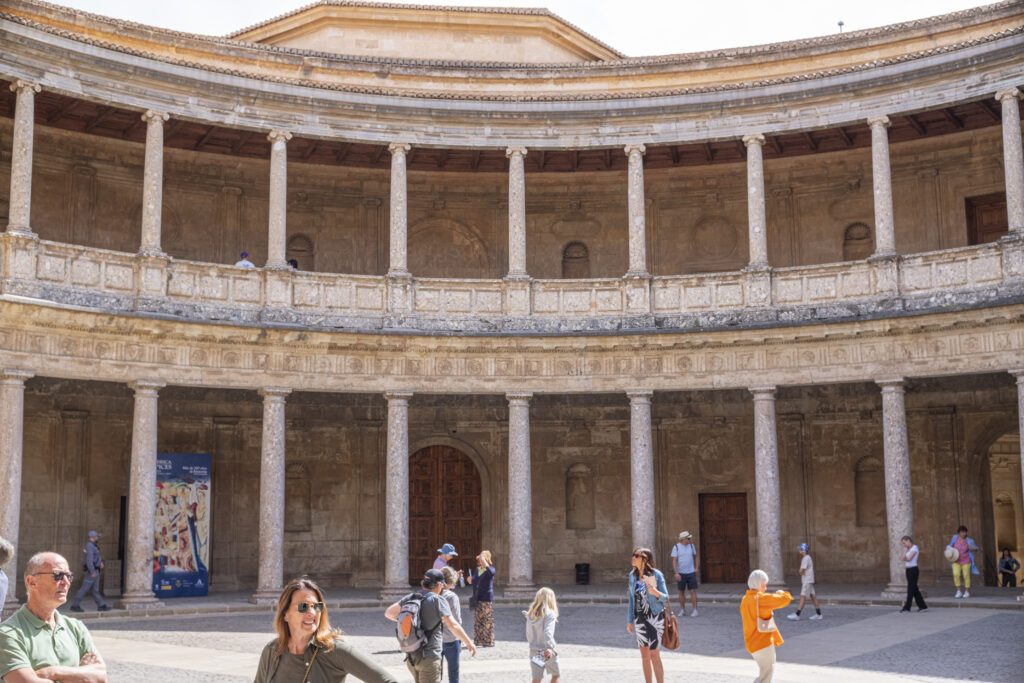
Each visit reminded us why these places matter so much. Standing where history happened or witnessing natural beauty that’s been deemed irreplaceable by the entire world, it’s quite special if you ask me.
While we loved the experience of exploring international UNESCO sites, we’ve barely scratched the surface of them all, including the incredible ones right here at home.
With that in mind, here’s your complete guide to America’s UNESCO treasures.
📍The Natural Wonders
These landscapes earned their UNESCO status through rare geological features, incredible biodiversity, or simply breathtaking natural beauty that leaves you speechless.
1. Yosemite National Park, California
To many, this is one of the most breathtaking national parks in the U.S. Yosemite’s enormous granite cliffs and ancient sequoia trees are thousands of years old, and its geologic features are among the world’s most unique. The waterfalls here are also among the tallest in North America, creating an amazing sight as they cascade down the cliffs.
2. Everglades National Park, Florida
The Everglades are America’s largest subtropical wilderness and a marshy wonderland where manatees and alligators call the shots. It’s wild, wet, and some even say “absolutely magical“. (Though I’ll admit, as incredible as it is, gators and snakes aren’t exactly my friends!)
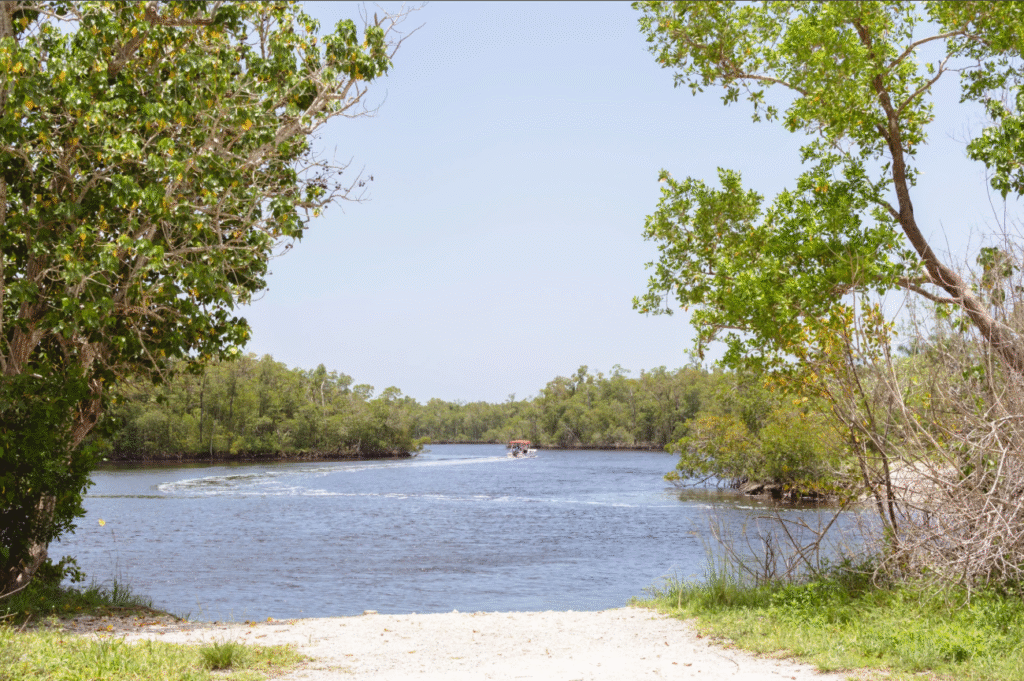
3. Hawai’i Volcanoes National Park, Hawai’i
Hawai’i Volcanoes National Park is home to two of the world’s most active volcanoes, Mauna Loa and Kilauea, which tower over the Pacific Ocean.
The volcanic eruptions constantly change the landscape, and the lava flows create unique rock formations. The park also has rare birds and forests filled with giant ferns.
4. Yellowstone National Park, Wyoming/Montana/Idaho
The world’s first national park, Yellowstone National Park, is famous for its geysers that shoot hot water high into the air, plus bears, wolves, and bison roaming freely.
Yellowstone’s colorful hot springs and dramatic landscapes show why this incredible park needs to be protected. For this and all the magical reasons that make Yellowstone so special, it’s one of the top five on my national park bucket list.
5. Olympic National Park, Washington
Ah! The Pacific Northwest with its rugged coastlines and temperate rainforests! Olympic National Park in northwest Washington has glaciers on mountain peaks, old-growth forests, and the longest stretch of wild coastline in the lower 48 states.
The temperate rainforest here is one of the best-preserved examples in the Pacific Northwest, and eleven rivers provide important habitat for fish that travel between the ocean and freshwater.
6. Redwood National and State Parks, California
Redwood National Park protects the world’s tallest trees – coastal redwoods that can grow over 300 feet high. The park stretches along the Pacific coast north of San Francisco and is home to sea lions, bald eagles, and the endangered California brown pelican.
7. Great Smoky Mountains National Park, Tennessee/North Carolina
It’s the most visited national park in the U.S. and one of the most special places I’ve ever been! Great Smoky Mountains National Park, commonly referred to as just “the Smokies,” covers more than 200,000 hectares and has over 3,500 plant species, including 130 different types of trees (almost as many as all of Europe combined).
The park is home to the world’s greatest variety of salamanders and many other endangered animals. Because it’s been largely undisturbed, you can still see what temperate forests looked like before human development.

8. Carlsbad Caverns National Park, New Mexico
Carlsbad Caverns has over 80 caves carved out of limestone rock. These caves are famous not just for their huge size, but also for their beautiful mineral formations that create amazing shapes and colors.
Lechuguilla Cave is especially important because scientists can study how caves form and what lives in them in a completely natural environment.
9. Mammoth Cave National Park, Kentucky
With over 400 miles of explored passages, this is the longest cave system in the world, with more than 560 kilometers of underground passageways that have been mapped so far, and continues to be an underground mystery that keeps on giving.
The limestone caves are home to many different plants and animals, including several endangered species that live both above and below ground.
10. Waterton Glacier International Peace Park, Montana & Alberta, Canada
In 1932, Weston Glacier became the world’s first International Peace Park when Waterton Lakes National Park in Canada joined with Glacier National Park in Montana.
Located on the border between the two countries, the park has an incredible variety of landscapes, including prairies, forests, mountains, and glaciers, plus many different plants and animals.
11. Kluane/Wrangell-St. Elias/Glacier Bay/Tatshenshini-Alsek, Alaska & Canada
This massive wilderness area spans both sides of the Alaska-Canada border and contains the largest non-polar icefield in the world. The spectacular landscape of glaciers and high mountain peaks is home to grizzly bears, caribou, and Dall’s sheep roaming freely across this remote territory.
12. Papahānaumokuākea, Hawaiian Islands
This vast marine protected area stretches northwest of the main Hawaiian islands and includes small islands, atolls, and the surrounding ocean, covering nearly 2,000 kilometers. The area is sacred to Native Hawaiian culture as the place where life begins and spirits return after death.
Two islands, Nihoa and Makumanamana, have archaeological remains from before European contact. The site protects extensive coral reefs, lagoons, and deep ocean habitats, making it one of the world’s largest marine protected areas. Without a doubt, this sacred marine reserve in the Pacific Ocean is both a biodiversity hotspot and a place of deep cultural significance.
13. Grand Canyon National Park, Arizona
Carved out by the Colorado River, the impressive Grand Canyon is nearly 1,500 meters deep and is the most spectacular gorge in the world. This Arizona landmark is a favorite of millions of visitors who come to see its horizontal rock layers that tell the geological history of the past 2 billion years. The canyon also contains prehistoric traces showing how humans adapted to this particularly harsh environment.
📍The Incredible Cultural Sites
These cultural sites in the U.S. preserve the human story in the most beautiful of ways.
Many of these stories are those of Indigenous civilizations, the birth of American democracy, and architectural achievements that still inspire today.
14. Mesa Verde National Park, Colorado
Sitting at over 2,600 meters high in Colorado’s southwest region, Mesa Verde National Park contains a huge collection of ancestral Pueblo Indian dwellings built between the 6th and 12th centuries.
Over 4,400 sites have been found, including villages on top of the mesa and impressive cliff dwellings made of stone with more than 100 rooms carved right into the canyon walls.
15. Chaco Culture, New Mexico
For over 2,000 years, Pueblo peoples lived across the southwestern United States, and Chaco Canyon was their major center between 850 and 1250. This place was the hub for ceremonies, trade, and political activities for the prehistoric Four Corners region.
Chaco is famous for its massive public and ceremonial buildings with unique architecture – it was an ancient urban ceremonial center unlike anything built before or since. The site includes Chaco Culture National Historical Park, Aztec Ruins National Monument, and several smaller related sites.
16. Taos Pueblo, New Mexico
Located in the valley of a small tributary of the Rio Grande, Taos Pueblo is an adobe settlement that consists of dwellings and ceremonial buildings that represent the culture of the Pueblo Indians of Arizona and New Mexico. These multi-story adobe structures have been continuously inhabited for over 1,000 years!
17. La Fortaleza and San Juan National Historic Site, Puerto Rico
Not because this is my home Island, but this one is a personal favorite. Between the 16th and 20th centuries, a series of defensive structures was built at this strategic point in the Caribbean Sea to protect the city and Bay of San Juan.
These fortifications represent an excellent example of European military architecture that was adapted to harbor sites on the American continent. Furthermore, to every Boricua, San Juan is always home.

18. Independence Hall, Pennsylvania
Where it all began! This building in Philadelphia is where both the Declaration of Independence (1776) and the U.S. Constitution (1787) were signed. The principles of freedom and democracy written in these documents became fundamental to American history and influenced lawmakers around the world.
19. Statue of Liberty, New York/New Jersey
This world-renowned and beloved towering monument was made in Paris by French sculptor Bartholdi, with Gustave Eiffel creating the steel framework inside. France gave it to the United States as a gift for the centenary of American independence, and it was inaugurated in 1886. Standing at the entrance to New York Harbor, it has welcomed millions of tourists from all over the world ever since.
20. Monticello and the University of Virginia, Virginia
Thomas Jefferson, author of the Declaration of Independence and third U.S. president, was also a talented architect. His architectural vision comes to life in these perfectly preserved examples of early American design.
He designed Monticello (1769-1809), his plantation home, and the University of Virginia’s original campus (1817-26), which he called his ideal “academical village.” Jefferson’s architectural style, based on classical antiquity, symbolized the new American republic’s connection to European tradition while showing the cultural experimentation of a maturing country.
21. San Antonio Missions, Texas
San Antonio Missions includes five frontier mission complexes along the San Antonio River basin in southern Texas, plus a ranch just about 37 kilometers south. Built by Franciscan missionaries in the 18th century, the complexes include churches, residences, farmlands, granaries, and water distribution systems.
They show the Spanish Crown’s efforts to colonize, evangelize, and defend the northern frontier of New Spain. The missions also demonstrate how Spanish and Coahuiltecan cultures blended together, especially in the decorative church elements that combine Catholic symbols with indigenous designs inspired by nature.
22. Cahokia Mounds State Historic Site, Illinois
Cahokia Mounds State Historic Site is the largest pre-Columbian settlement north of Mexico. It was occupied mainly during the Mississippian period (800-1400), when it covered nearly 1,600 hectares and included about 120 mounds.
This agricultural society may have had 10,000-20,000 people at its peak between 1050 and 1150. The main feature is Monks Mound, the largest prehistoric earthwork in the Americas, covering over 5 hectares and standing 30 meters high.
23. Monumental Earthworks of Poverty Point, Louisiana
This site in the Lower Mississippi Valley was built by hunter-gatherer societies between 3,700 and 3,100 years ago. The Monumental Earthworks of Poverty Point is a complex of five mounds, six concentric semi-elliptical ridges separated by shallow depressions, and a central plaza.
Created for both residential and ceremonial purposes, it represents a remarkable achievement in earthen construction in North America that wasn’t surpassed for at least 2,000 years.
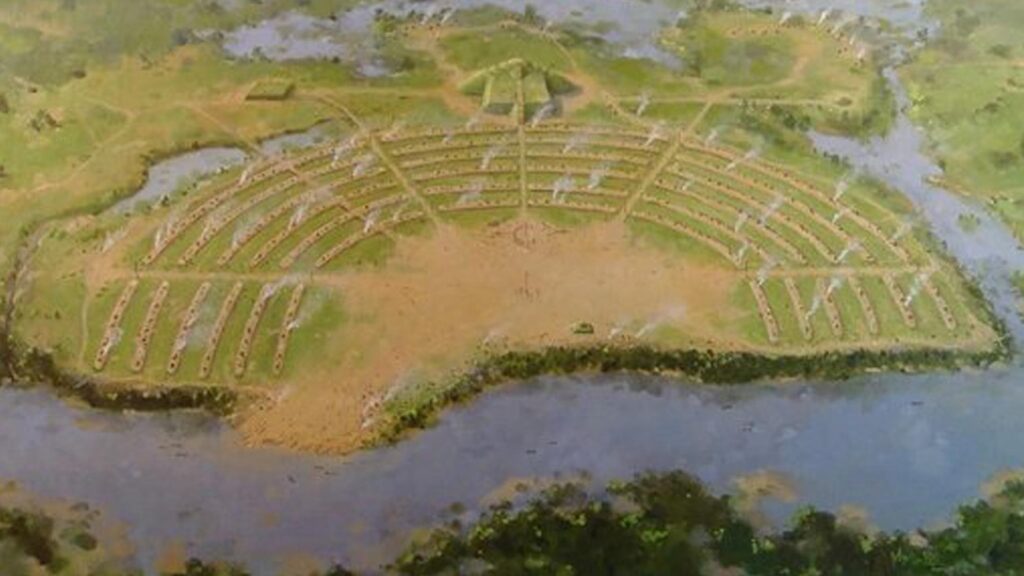
24. Hopewell Ceremonial Earthworks, Ohio
Hopewell Ceremonial Earthworks includes eight monumental earthen enclosure complexes built between 2,000 and 1,600 years ago along tributaries of the Ohio River. They’re believed to represent the most surviving examples of the Indigenous Hopewell culture and show incredible precision with geometric shapes and hilltops sculpted to create vast, level plazas.
They also align with the cycles of the Sun and Moon and served as ceremonial centers. Archaeological discoveries have revealed finely crafted ritual objects made from exotic materials obtained from distant places.
25. The 20th-Century Architecture of Frank Lloyd Wright, Various States
Eight iconic buildings across the country showcase the genius of America’s most famous architect.
The 20th-century Architecture of Frank Lloyd Wright comprises eight buildings across the United States designed by him during the first half of the 20th century. These include famous designs like Fallingwater in Pennsylvania and the Guggenheim Museum in New York.
All the buildings showcase Wright’s “organic architecture,” which features open floor plans, blurred boundaries between indoor and outdoor spaces, and innovative use of materials like steel and concrete. Wright’s work strongly influenced the development of modern architecture in Europe.
26. Moravian Church Settlements, Bethlehem, Pennsylvania
This site is part of a four-country property that includes Moravian settlements in Denmark, Germany, the United Kingdom, and the U.S. Bethlehem was established according to planning principles that reflected the ideals of the Moravian Church and their vision of an “ideal city” developed in the 18th and early 19th centuries.
The Moravian Church Settlements feature distinctive Moravian buildings, including a Gemeinhaus (congregation building), church, choir houses, and a nearby God’s Acre (cemetery). The architectural style is based on Moravian Church Civic Baroque but adapted to local conditions, and an active congregation continues Moravian traditions today.
Planning Your UNESCO Adventure
- Timing is everything. Many of these sites are the most enjoyable during shoulder seasons (spring and fall) to avoid crowds and often enjoy better weather.
- Go deep, not just wide. Ranger-led tours at cultural sites provide context that signs simply can’t match. Reach out to me if you need help booking these.
- Respect the significance and LEAVE NO TRACE. Especially at sacred Indigenous sites, remember you’re not just a tourist, you’re a visitor to places of deep cultural importance. Be mindful, respectful, and leave no trace.
- Think road trip themes. Pick three or four nearby sites and build your next vacation around them. The journey between sites often reveals some exciting hidden gems.
Final Thoughts
UNESCO World Heritage Sites are humanity’s shared inheritance, not just tourist destinations. Each site on this list represents something irreplaceable, whether it’s a unique ecosystem, an architectural achievement, or a window into cultures and civilizations that shaped our world.
The fact that 26 of these extraordinary World Heritage Sites exist within U.S. borders means world-class adventures are closer than you think. No international flights, no foreign visas, no language barriers, no passports. Just incredible experiences waiting to be discovered!
Carlos and I are already planning which ones to tackle next. We’re particularly drawn to the historical significance behind many of these, but I know my adventurer soul will take me to Yellowstone and Yosemite before the rest. Though I might need some convincing before going back to Everglades territory!
So grab your National Parks Pass and start exploring the UNESCO national parks on this list! If you don’t have one, you can purchase your National Parks Passport Pass online.
🧳Ready to start planning? As a certified travel advisor, I’d love to help you create the perfect itinerary for exploring these incredible sites. Whether you’re dreaming of a national parks road trip or planning an international UNESCO tour, let’s turn your travel goals into reality. Contact me to start planning your next meaningful adventure!
- To learn more about these World Heritage Sites in the U.S., you can visit https://whc.unesco.org/en/statesparties/us.
- And if you’re feeling curious for more, you can find the full global list of UNESCO World Heritage Sites at unesco.org.
🔖Save this for later!
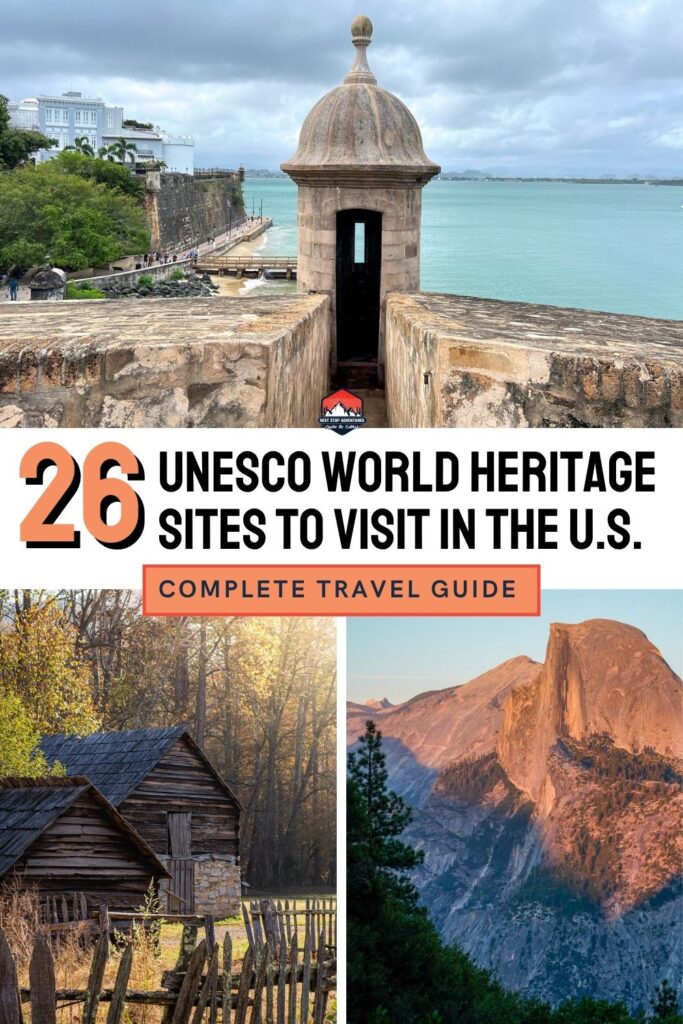

Hey, I’m Yanitza 👋 Adventure Travel & U.S. Destination Specialist, travel writer, and hidden-gem hunter with over 8 years of experience helping travelers explore deeper and travel slower. I specialize in crafting authentic, stress-free adventures from small towns to scenic hikes and scuba dives. I’m a firm believer that the best stories happen when you venture beyond tourist hotspots. When I’m not planning getaways or writing travel guides, I’ll probably be home rewatching The Vampire Diaries like it’s my job and daydreaming about future adventures in Spain.

